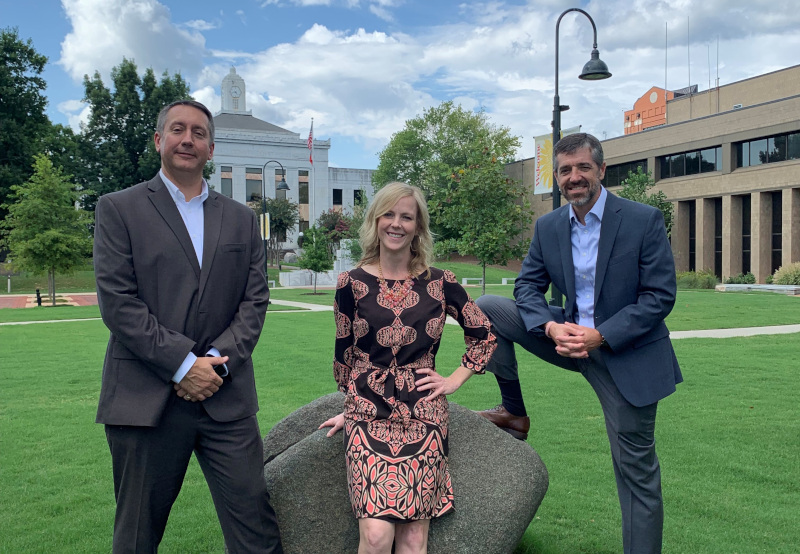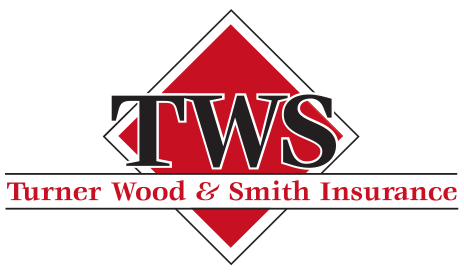Gainesville, Georgia
Growing wisely
Business View Magazine interviews representatives from Gainesville, Georgia, as part of our focus on best business practices of American cities.
The city of Gainesville, the county seat of Hall County, Georgia, is located approximately 50 miles northeast of Atlanta and 100 miles southwest of Greenville, South Carolina. Situated at the foothills of the Blue Ridge Mountains, the city is surrounded on three sides by Lake Sidney Lanier, constructed in 1956 by the Army Corps of Engineers by building Buford Dam on the Chattahoochee River.
In the early 1800s, Gainesville was established by European-American settlers as “Mule Camp Springs.” In 1821, it was renamed Gainesville in honor of General Edmund P. Gaines, a hero of the War of 1812, and a noted military surveyor and road-builder. In 1871 the Airline Railroad, later named the Georgia Southern Railroad, began to stop in Gainesville, increasing its ties to other markets and stimulating business and population; the town grew from 1,000 in 1870, to over 5,000 by 1900. By that time, textile mills had become the primary driver of the economy, with the railroad integral to delivering raw cotton and carrying away the mills’ products. After World War II, a businessman named Jesse Jewell started the poultry industry in north Georgia, and chickens have since become the state’s largest agricultural crop. This $1 billion a year industry has given Gainesville the title “Poultry Capital of the World.”

Pictured Left to Right: City Manager, Bryan Lackey; Assistant City Manager, Angela Sheppard; Community and Economic Development Director, Rusty Ligon
Modern Gainesville, Georgia is also home to several international firms, including Kubota Manufacturing and ZF Wind Power. “One of the things that’s interesting about Gainesville is that we do have a large international presence,” says Assistant City Manager, Angela Sheppard. “Kubota is based out of Japan and ZF Wind Power is based in Germany. We also have companies from Iceland, Sweden, and Switzerland, and we’re excited to have such a diverse population and employment base, here.”
Today, Gainesville, Georgia has a population of 44,000, and is reputed to be the fastest-growing city in Georgia. “We had a 20 percent population growth over the last eight years, so we are a growing place,” says City Manager, Bryan Lackey. “It’s partly because of our geography. We are the closest, separate MSA (Metropolitan Statistical Area) to the Atlanta area MSA. The spillover of growth from Atlanta is now starting to hit Gainesville. People who are a little tired of living ITP, which is Inside The Perimeter, are now starting to look at this place towards the mountains that maybe isn’t such a bad place to live.”
Lackey adds that the city is also a pretty good place to visit. “We’re in between I-85 that runs to South Carolina, and I-985 that runs into the North Carolina mountains, so we’re quite a hub,” he notes. “While we have 44,000 people in our town, we swell to well over 150,000 during the day, because we are the job hub for this area.” The city is also a medical hub; its largest employer, the Northeast Georgia Medical Center, has over 8,300 employees, and that number increases to about 15,000, when you add all the associated medical offices that surround the hospital. “So people come into Gainesville, Georgia during the day for their medical needs, and they come here for shopping and entertainment. Gainesville is where you come to go to all the big department stores. During the weekends, we see a lot of people coming into our town.”
Adjusting to rapid growth has spurred the city’s economic expansion. “Development and redevelopment has been a focus here in Gainesville for the past four or five years,” Lackey reports. “So we’re quite busy. The city council, and previous city councils, have made some strategic investments in certain properties in and around our downtown area; one of them being a former county jail. When the county was looking to change that arrangement, the city made a pretty big investment to purchase it and we’ve been sitting on that for awhile. A year ago, we were able to make another strategic purchase of a six-acre lot to go along with that four-acre jail site. We issued an RFP at the beginning of the year for a development partner on those lots and we’re going to be announcing, soon, that we have selected our development partner for a mixed-use development to go on each site that will have 15,000 square feet of retail and about 350 market-rate unit apartments.”
Another project, which just had its ribbon cutting, consists of 64,000 square feet of Class A office space, and was built on a formerly-owned city lot in the middle of downtown. “We have a regional construction company, Carroll Daniel Construction, that has about 200 employees that they want to centrally locate in downtown Gainesville,” Lackey says. “So, we’ll have 200 employees downtown, which will be wonderful for our merchants and restaurants.”
Downtown Gainesville has long been a focus of the city’s administrations, past and present. “We have an historic downtown square and we also have several blocks around that square that we consider our downtown,” explains Community and Economic Development Director, Rusty Ligon. “It’s approximately 50 acres in size. Back in the 1990s, one of the things that helped revitalize our downtown was some streetscaping around the historic downtown square and that led to a revitalization of businesses moving in. We have since done additional streetscaping projects since the ‘90s; we just wrapped one up and are about to start another set of projects that will address the streetscaping there.”
Sheppard adds, “We have a large streetscaping project that’s doing two of our main roads in our downtown, and we are widening our sidewalks by about nine additional feet. We worked with some of our downtown business owners and asked them what their priorities were and what they wanted to see in the streetscaping and a lot of them said outdoor space and sidewalk space for cafés were more important to them than parking. So, we’re redoing our streetscaping, taking up some parallel parking spaces to make more room for activity downtown.”
Some of that activity is generated by students from Brenau University, which owns a couple of buildings downtown that contain the school’s graduate medical programs. “It’s bringing a younger presence in our downtown,” says Lackey, “so we’re certainly seeing a younger vibe, and we’ve put in some other things in place to encourage that.”

Carroll Daniel Construction.
One of those “things” has been a modification of the city’s alcohol allowance to allow limited open containers, outside. “We have a defined, downtown dining district where people are allowed to have a 16-ounce, clear plastic cup with the beverage of their choice,” Sheppard discloses. “We have found that people enjoy that, especially at a lot of our downtown events. It seems to be most used when we have concerts and things like that, and it’s been very beneficial.”
In order to further spur development, the city offers several different incentives which, Lackey believes make Gainesville, Georgia “one of the more incentivized places in Georgia for people to invest and reinvest.” “The biggest we have for our downtown and midtown areas is a Tax Allocation District (TAD) designation,” Ligon remarks. “We have that in place for those 50 acres and in our midtown area, and south of downtown, for about 250 acres. We’ve seen several people take advantage of that incentive and we anticipate some of the larger projects will also take advantage of it. If that TAD, that financial tool, were not in place, I don’t know that those projects would happen. We also have, just recently, adopted another TAD on the western side of town to help promote some redevelopment there in some of our older retail areas. We also have a Federal Opportunity Zone designation as well as a State Opportunity Zone designation. The federal Opportunity Zone is very new across the country; we think that we’ll have some folks taking advantage of that in our downtown, midtown, and other areas, but we haven’t seen that, yet.”
Apart from downtown redevelopment, Gainesville, Georgia also promotes its industrial parkland. “A firm that’s in the process of relocating is a company called Fox Factory,” Lackey reveals. “They’re California-based, right now, but they have announced that they’re moving their manufacturing and their headquarters to Georgia and they’re moving here with a thousand jobs. They make high-end racing shocks and parts, and they have a relationship with the racetrack, Road Atlanta. While it’s not in Gainesville, it is located in Hall County, and they want to be close by. They bought one of our last industrial park sites within the city. Gainesville has a rich history of developing industrial parks – we have seven – and because we’re now out of space, the city is now in the process of developing our next business park. We’re calling it the Gainesville 85 Business Park. It’s 1,300 acres that the city has owned for many years and it’s been sitting vacant for some time. We saw the opportunity, now that we’re out of industrial space, and it’s been met with rave reviews. We’re still in the environmental approval stage, working through the Corps of Engineers process, yet we already have businesses that are trying to claim their spot in that park, even before we have any infrastructure in place because there’s such a need for it.”
Regarding amenities for its residents, Lackey says that the city is trying to accentuate its connection to Lake Lanier. The community’s trail system, called the Highlands to Islands Trail, runs from the shores of Lake Lanier, one of the major recreation sites in northeast Georgia. “It comes through downtown Gainesville,” he explains, “and right now, runs to the south of the city. But the countywide community has a plan to extend it all the way down to the Lake Lanier Islands Resort on the southern part of the community.” The city also started a new branding campaign that focuses on lakeside parks. “They’re parks that allow our community to have connectivity to the lake,” he adds. “There was a small, privately-run park called Lake Lanier Olympic Park that actually was the site of the rowing events at the ’96 Olympics in Atlanta. Our community has taken that on because we feel that it could be so much more. And we’re focusing on other smaller sites and parks in our community to do the same.”
Of course growth has its problems and its challenges. “As you grow, traffic is a growth pain that we have,” Lackey admits. “We’re fortunate that most of our major routes are state routes, maintained by the Georgia Department of Transportation. From an operating side we’re blessed, but it also means they’re not ours to control. So, we have to work with them. We’ve taken over the operation of the traffic signals, even on those state routes, and implemented an ‘intelligent traffic system.’ It has cameras in place in intersections that monitor traffic and coordinates red lights based on demand; we also have traffic engineers in our traffic control center, where our staff can change the timing on them to make traffic flow as best as possible.
“Also, Gainesville runs the airport for our community – Lee Gilmer Memorial Airport. It was given to us by the Navy at the end of World War II, with an historic terminal building. However, it’s fallen into disrepair and we’re in the middle of a major renovation to bring some modern amenities to it. We’re fortunate with the technical part of the airport – the landing systems and the lights – to be one of the most sophisticated airports in our region. And, because of that, we’re one of the biggest in the state as far as the number of aircraft that are based here. However, we hear, very consistently, from the pilots and plane owners that our facilities for them at the terminal are sub-par. So, we’re embarking on a project that’s going to approach a million dollars, to renovate it to provide more amenities for our flying community. We love having those corporate jets here; it’s great for the community and it’s great for our tax base to have those Gulfstream jets sitting at our airport.”
The airport project, as well as others, are examples of the concept, in which Lackey believes fervently, that public investment is a precursor to private investment. “That’s why we’re putting as much public investment as we are into our community – roads, streetscaping, our trail system, our parks. We are a community that believes in investing in our community and we believe that private investment will follow public investment.”
Ligon says it’s working. “We’re seeing growth and development – retail and residential – happening all over the city,” he avers. “We have a passion for what we’re doing here,” says Sheppard, in conclusion. “We are almost 200 years old and we have developed over time. And we’re committed to growing in a wise way.”
AT A GLANCE
WHO: Gainesville, Georgia
WHAT: A city of 44,000
WHERE: Hall County, northeast of Atlanta
WEBSITE: www.gainesville.org
PREFERRED VENDORS
Terwilliger Pappas – www.terwilligerpappas.com
At Terwilliger Pappas, our focus is developing best-in-class multifamily communities in the Southeast’s most advantageous submarkets. Our platform is supported by an accomplished leadership team, a collection of vetted design and construction firms and established relationships with institutional investors.








